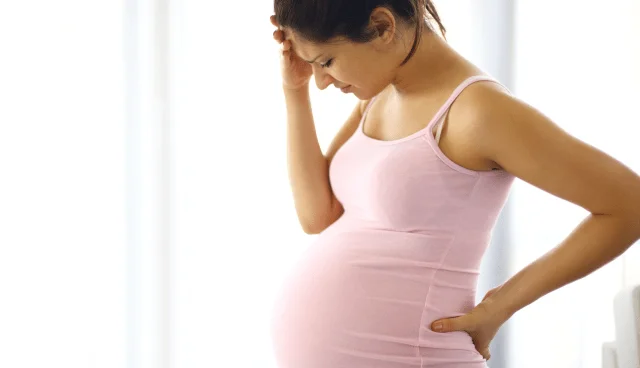
Preeclampsia: Symptoms, Causes, and Treatments in High-Risk Pregnancies
Pregnancy is a remarkable journey filled with anticipation, joy, and hope. However, for some expectant mothers, this journey can be fraught with challenges, especially when faced with a high-risk pregnancy. Preeclampsia is one such complication that can cast a shadow on this otherwise joyful experience. In this comprehensive guide, we will explore what preeclampsia is, its symptoms, causes, and treatments, with a specific focus on high-risk pregnancies. We’ll also delve into the various criteria and types of high-risk pregnancies, conditions that increase the risk of preeclampsia, and the steps to manage this condition in such cases.
Understanding Preeclampsia
Preeclampsia, often referred to as “pregnancy-induced hypertension,” is a complex and potentially life-threatening condition that typically occurs after the 20th week of pregnancy. This condition is characterized by high blood pressure and damage to organs such as the liver and kidneys. Preeclampsia can be particularly challenging to manage in high-risk pregnancies, where additional complications may arise. Before we dive into the specifics of high-risk pregnancies, let’s explore the symptoms and causes of preeclampsia.
Recognizing the Symptoms
Preeclampsia can manifest with a range of symptoms, some of which are subtle and easily overlooked. Being aware of these symptoms is crucial for early detection and intervention. Common symptoms of preeclampsia include:
1. High Blood Pressure:
Elevated blood pressure is a hallmark of preeclampsia. Blood pressure readings consistently above 140/90 mm Hg should raise concerns.
2. Swelling:
Edema, or swelling, particularly in the hands and face, is another common symptom.
3. Protein in Urine:
Proteinuria, the presence of excess protein in the urine, is often detected through routine prenatal testing.
4. Headaches:
Persistent and severe headaches that don’t respond to over-the-counter pain relievers can be indicative of preeclampsia.
5. Vision Changes:
Blurred vision, flashing lights, or other vision disturbances can be warning signs.
6. Abdominal Pain:
Pain in the upper abdomen, typically on the right side, may signal liver involvement.
7. Decreased Urination:
Reduced urine output can indicate kidney dysfunction.
It’s important to note that some women with preeclampsia may not exhibit any symptoms, making regular prenatal check-ups and monitoring of vital signs essential.
Unpacking the Causes
The exact cause of preeclampsia remains elusive, but several factors are believed to contribute to its development:
1. Placental Abnormalities:
Preeclampsia is thought to be related to problems with the placenta, such as inadequate blood flow or an abnormal immune response to the placenta.
2. Genetic Factors:
A family history of preeclampsia may increase the risk.
3. First Pregnancy:
Women experiencing their first pregnancy are at a higher risk of developing preeclampsia.
4. Age:
Both very young mothers (under 20) and older mothers (over 40) face an increased risk.
5. Multiple Gestation:
Carrying twins or more can put extra strain on the circulatory system, increasing the risk of preeclampsia.
6. Pre-existing Conditions:
Chronic hypertension, diabetes, kidney disease, and certain autoimmune disorders can elevate the risk of developing preeclampsia.
7. Obesity:
Being overweight or obese before pregnancy can increase the likelihood of preeclampsia.
Now that we’ve covered the basics of preeclampsia, let’s turn our attention to high-risk pregnancies and their various criteria and types.
High-Risk Pregnancies: Criteria and Types
Not all pregnancies are equal in terms of risk. Some women are at a higher risk of complications like preeclampsia due to various factors. Identifying high-risk pregnancies is crucial for ensuring the safety of both the mother and the baby. Here are some criteria and types of high-risk pregnancies:
Criteria for High-Risk Pregnancies
1. Age:
As mentioned earlier, both very young (under 20) and older (over 40) mothers are at a higher risk.
2. Medical Conditions:
Pre-existing medical conditions such as diabetes, hypertension, kidney disease, and autoimmune disorders can increase the risk.
3. Previous Complications:
Women who have experienced complications in previous pregnancies, including preeclampsia, are at a higher risk.

4. Multiple Gestation:
Carrying twins, triplets, or more increases the risk due to the added strain on the body.
5. Obesity:
Obesity before pregnancy can raise the risk of various complications, including preeclampsia.
Types of High-Risk Pregnancies
1. Medical High Risk:
These pregnancies involve pre-existing medical conditions that increase the risk, as mentioned earlier.
2. Obstetrical High Risk:
This category includes factors such as multiple gestation, previous pregnancy complications, and maternal age.
3. Socioeconomic High Risk:
Women with limited access to prenatal care due to socioeconomic factors are also at a higher risk.
4. Environmental High Risk:
Exposure to environmental hazards during pregnancy, such as smoking or substance abuse, can pose risks.
5. Lifestyle High Risk:
Unhealthy lifestyle choices, including poor nutrition and lack of exercise, can contribute to high-risk pregnancies.
Understanding these criteria and types is vital because high-risk pregnancies often require specialized care and monitoring to ensure the best possible outcomes for both mother and baby. Preeclampsia is just one of the many complications that can be more prevalent in high-risk pregnancies.
Preeclampsia in High-Risk Pregnancies
Now, let’s focus on the specific challenges and considerations when preeclampsia occurs in high-risk pregnancies.
1. Increased Risk:
High-risk pregnancies inherently carry a higher risk of complications, including preeclampsia. The presence of pre-existing medical conditions or other risk factors can compound the danger.
2. Complexity of Diagnosis:
Diagnosing preeclampsia in high-risk pregnancies can be challenging due to the overlapping symptoms of the underlying medical conditions. This underscores the importance of vigilant monitoring by healthcare providers.
3. Monitoring:
High-risk pregnancies often involve more frequent monitoring of vital signs, blood pressure, and laboratory tests to detect preeclampsia early.
4. Treatment Challenges:
Managing preeclampsia in high-risk pregnancies may require a multifaceted approach. Medications to control blood pressure, antenatal steroids to aid fetal lung development, and bed rest might be part of the treatment plan.
High-Risk Pregnancy Conditions that Increase Preeclampsia Risk
Several conditions associated with high-risk pregnancies can elevate the risk of preeclampsia. Here are some notable ones:
1. Chronic Hypertension:
Women with pre-existing high blood pressure are at an increased risk of developing preeclampsia during pregnancy.
2. Diabetes:
Both type 1 and type 2 diabetes can contribute to a higher risk of preeclampsia.
3. Kidney Disease:
Pre-existing kidney disease can impair the body’s ability to filter waste and regulate blood pressure, making preeclampsia more likely.
4. Autoimmune Disorders:
Conditions like lupus and antiphospholipid syndrome can increase the risk of preeclampsia due to their impact on the immune system.
5. Thrombophilia:
Inherited blood clotting disorders can contribute to the development of preeclampsia.
6. Obesity:
Excessive weight before pregnancy is a risk factor for both high-risk pregnancies and preeclampsia.
It’s important to note that these conditions can often coexist, further complicating the picture and underscoring the importance of personalized care.
Managing High-Risk Pregnancies with Preeclampsia
The management of high-risk pregnancies complicated by preeclampsia requires a coordinated effort between the expectant mother, healthcare providers, and often a team of specialists. Here are some key strategies for managing these challenging cases:
1. Regular Prenatal Check-ups:
High-risk pregnancies demand frequent and thorough prenatal visits to monitor the mother’s health, fetal growth, and blood pressure.
2. Blood Pressure Control:
Medications may be prescribed to control high blood pressure and prevent it from escalating into a more severe condition.
3. Bed Rest:
In some cases, healthcare providers may recommend bed rest to reduce stress on the body and mitigate the risk of complications.
4. Antenatal Steroids:
These steroids may be administered to enhance fetal lung development, especially if premature birth is anticipated due to preeclampsia.
5. Hospitalization:
Severe cases of preeclampsia may require hospitalization for closer monitoring and treatment.
6. Delivery:
The ultimate treatment for preeclampsia is the delivery of the baby, which may be induced or via cesarean section, depending on the circumstances.
7. Neonatal Care:
Babies born prematurely due to preeclampsia may require specialized neonatal care to address any health issues associated with premature birth.
Conclusion:
In the journey of pregnancy, the anticipation of welcoming a new life into the world is often mixed with concerns about potential complications. High-risk pregnancies, with their elevated risk of conditions like preeclampsia, require heightened vigilance and specialized care. It’s essential for expectant mothers and their healthcare teams to work closely together to navigate these challenges and ensure the best possible outcomes for both mother and baby.
Preeclampsia, while a serious condition, can be managed and treated effectively when detected early and addressed promptly. With advancements in medical science and the dedication of healthcare providers, the outlook for high-risk pregnancies complicated by preeclampsia continues to improve, offering hope and reassurance to expectant mothers facing this complex journey. Remember that knowledge, regular prenatal care, and open communication with your healthcare team are your best allies in managing a high-risk pregnancy and ensuring a safe and healthy delivery.
